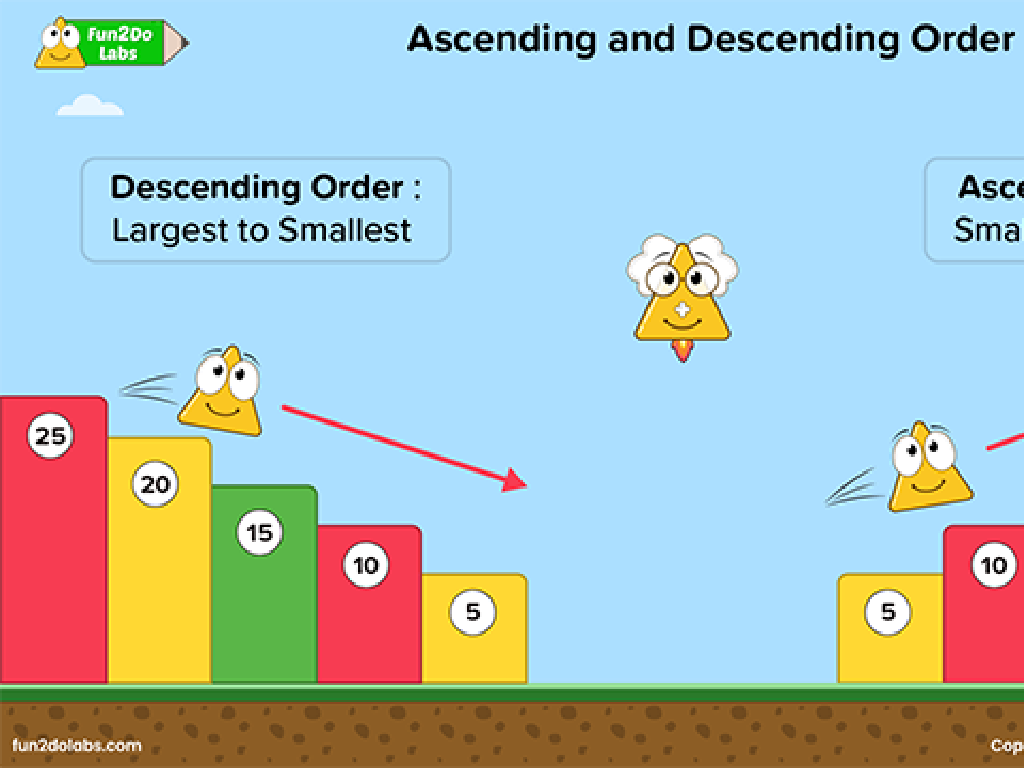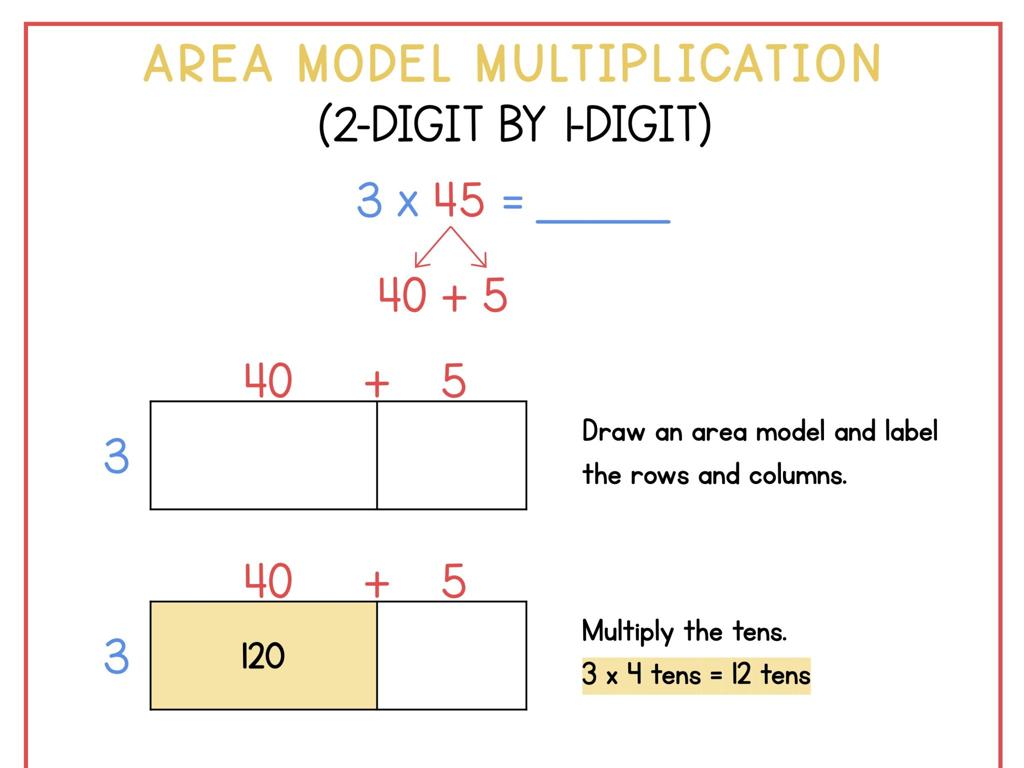Put Integers In Order
Subject: Math
Grade: Sixth grade
Topic: Integers
Please LOG IN to download the presentation. Access is available to registered users only.
View More Content
Welcome to Integers!
– Understanding Integers
– Integers include whole numbers and their negatives
– What are Integers?
– Integers are like -3, 0, 7, and not fractions/decimals
– Real-life integer examples
– Temperatures, floors in a building, bank balances
– Ordering integers
– Place integers on a number line from least to greatest
|
This slide introduces the concept of integers to sixth-grade students. Begin by explaining that integers are a set of whole numbers that include both positive numbers, negative numbers, and zero. Emphasize that integers do not include fractions or decimals. Provide relatable examples such as temperatures (which can go below zero), floors below ground level in a building, or bank balances which can be negative or positive. Then, explain how to order integers by using a number line, placing them from the smallest (most negative) to the largest (most positive) value. Encourage students to think of other real-life scenarios where integers are used and how they might be ordered.
Positive and Negative Numbers
– Understanding Positive Numbers
– Numbers greater than zero, e.g., 1, 2, 3
– Exploring Negative Numbers
– Numbers less than zero, e.g., -1, -2, -3
– Number Line Identification
– Visual tool to recognize and locate integers
– Comparing and Ordering Integers
– Arrange numbers from smallest to largest
|
This slide introduces students to the concept of positive and negative numbers, which are the building blocks of integers. Positive numbers are those above zero, found to the right on a number line. Negative numbers are below zero, located to the left on a number line. It’s crucial for students to be able to identify and differentiate between these two types of numbers visually using a number line. Additionally, students should learn how to compare and order integers, which is a fundamental skill in math that will be applied in various contexts as they progress in their education. Encourage students to practice by placing different integers on a number line and then ordering them from the smallest to the largest value.
Comparing Integers
– Understanding ‘greater than’ and ‘less than’
– Numbers to the right are greater, to the left are less
– Using a number line for comparison
– Visualize integers on a line to determine their value relative to each other
– Rules for ordering integers
– Positive integers are always greater than negative integers
– Practice with real examples
– Let’s order -3, 1, 4, and -1 on a number line
|
This slide introduces students to the concept of comparing integers using ‘greater than’ and ‘less than’ symbols. Emphasize that on a number line, numbers increase in value as you move to the right and decrease as you move to the left. Explain the basic rules for ordering integers: any positive integer is greater than any negative integer, and among positive integers or negative integers, the one with the greater absolute value is larger. Provide examples and encourage students to practice by placing integers on a number line and comparing them. This will help solidify their understanding of the relative value of integers.
Ordering Integers
– Steps to order integers
– List numbers, compare each pair, arrange based on value
– Order from least to greatest
– Start with the smallest, end with the largest integer
– Order from greatest to least
– Begin with the largest, finish with the smallest integer
– Practice with examples
|
This slide introduces students to the concept of ordering integers. Begin by explaining the steps to put integers in order, which involves listing out the numbers, comparing each pair, and arranging them based on their value. Emphasize the importance of understanding the value of integers, where negative numbers are less than positive numbers. Provide examples of ordering integers from least to greatest and from greatest to least. Use number lines to visually represent the position of integers. Encourage students to practice with examples and to check their work by ensuring that each integer is either increasing or decreasing in value as appropriate. This foundational skill will aid in their understanding of more complex mathematical concepts.
Let’s Practice Ordering Integers!
– Example 1: Mixed integers ordering
– Arrange -10, 0, 7, -3 from least to greatest
– Example 2: Integers in real-world
– Temperature changes: -5°C, 0°C, 15°C
– Guided practice session
– Work through problems with teacher’s help
– Understanding integer order
|
This slide is aimed at providing students with practical examples to understand the concept of ordering integers. Start with a simple set of mixed integers and demonstrate how to arrange them from the least to the greatest. Then, move on to a real-world scenario, such as temperature changes, to show how integers are used in everyday life. Follow this with a guided practice session where students can try ordering integers with the teacher’s assistance, ensuring they grasp the concept. Emphasize the importance of understanding the number line and how negative numbers are ordered in relation to positive numbers. Encourage students to ask questions and provide additional examples if needed.
Class Activity: Integer Ordering Challenge
– Split into teams for a challenge
– Order a list of integers as a team
– Arrange numbers from least to greatest
– Each team presents their ordered list
– Discuss the strategies used
– Share methods: number line, comparing values, etc.
|
This interactive class activity is designed to help students understand how to order integers. Divide the class into small teams and provide each with a set of integers to order from least to greatest. After the activity, each team will present their ordered list to the class. This presentation will allow students to explain their thought process and the strategies they used, such as visualizing a number line or comparing the absolute values of the integers. Encourage discussion on the different methods used by teams, highlighting that there can be multiple ways to approach the same problem. Possible variations for different teams could include ordering negative integers, mixing positive and negative integers, or using integers from different contexts like temperatures or elevations.
Conclusion: Mastering Integer Order
– Recap of integer ordering
– Mastery is crucial for math skills
– Understanding integer order is foundational for future math concepts.
– Homework: List ordering practice
– Order the integers from smallest to largest: -8, 17, -3, 0, 14.
– Be prepared to discuss solutions
|
As we conclude today’s lesson on ordering integers, it’s important to emphasize the role this skill plays in a student’s overall mathematical development. Mastery of integer order is not only crucial for understanding number lines but also forms the basis for algebraic thinking. For homework, students are tasked with ordering a given list of integers, which will reinforce their understanding of the concept. Encourage students to explain their thought process when they present their ordered lists in the next class, fostering a deeper comprehension and the ability to articulate their reasoning.





